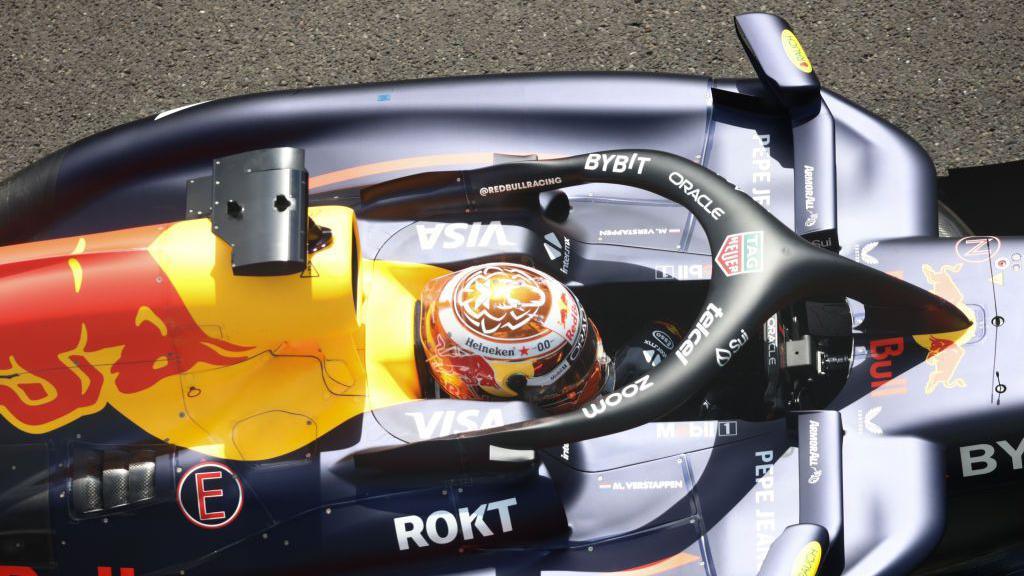What is the halo in Formula 1?

- Published
The halo is a curved wishbone-shaped structure that surrounds the cockpit of a Formula 1 car.
It was first introduced in 2018, to improve the safety of drivers during races.
The structure is attached to the car in three places, surrounding the driver's head at the top of the cockpit and attaching to the front of the car.
This design provides the least obstruction to drivers while they race on the track.
It acts as a shield which protects the driver by deflecting or absorbing impact from major accidents or crashes, as well as flying debris.
The bar structure is made of titanium and is designed to hold the weight of a London double-decker bus.
There was much criticism when the halo was first introduced, but its effectiveness was demonstrated over the years.
Governing body, FIA made the halo mandatory across all 'formula' series in 2018.

The halo was made mandatory in Formula 1 in 2018
Get in touch
Send us your questions
When has the halo worked?
Lewis Hamilton was protected by the halo when a piece of debris flew towards him during Turn One of the 2025 US Grand Prix sprint race, after a four-car collision. The piece of debris skimmed the halo and flew over Hamilton's head.
Romain Grosjean survived a near-fatal crash at the 2020 Bahrain Grand Prix. His car was split in two and set on fire in a collision with the barriers but as the halo took the brunt of the impact, he managed to escape with minor injuries.
At the 2022 British Grand Prix, Zhou Guanyu was protected by the halo in a high-speed crash which flipped his car several times at almost 200mph, and smashed into a grandstand barrier, during the first lap at Silverstone. He was declared uninjured after a check-up at the medical centre.
Why was the halo introduced in Formula 1?
Formula 1 appeared to begin to take driver safety more seriously in recent years after the deaths of Henry Surtees in a Formula 2 race in 2009, Jules Bianchi at the 2014 F1 Japanese Grand Prix, and Justin Wilson at an IndyCar event in 2015.
Bianchi died after suffering severe head injuries in Suzuka, where his car crashed into a recovery vehicle during the rain-hit race.
He was the first F1 driver to die from injuries sustained in a grand prix since Brazilian triple world champion Ayrton Senna was killed at the San Marino Grand Prix in Imola in 1994.
The halo was first trialled in 2016 before it became mandatory two years later.
This article is the latest from BBC Sport's Ask Me Anything team.
What is Ask Me Anything?
Ask Me Anything is a service dedicated to answering your questions.
We want to reward your time by telling you things you do not know and reminding you of things you do.
The team will find out everything you need to know and be able to call upon a network of contacts including our experts and pundits.
We will be answering your questions from the heart of the BBC Sport newsroom, and going behind the scenes at some of the world's biggest sporting events.
Our coverage will span the BBC Sport website, app, social media and YouTube accounts, plus BBC TV and radio.